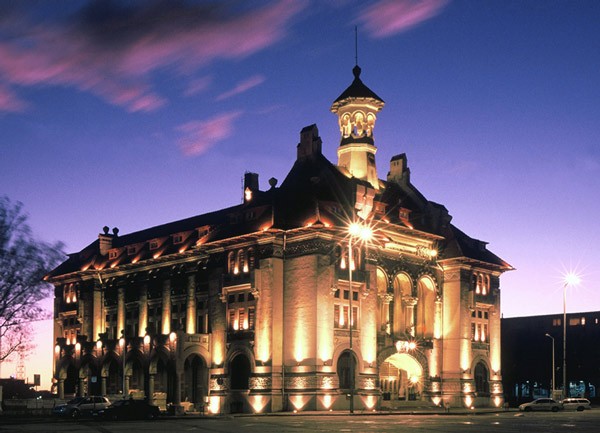Ancient Anchors and Their Symbols / The History of Romania in One Object
- RCI USA
- Nov 29, 2021
- 5 min read

Photo 1: Ancient anchors preserved in the Sacred Zone of the Histria archeological site
For more than two millennia, the inhabitants of the western Pontic cities of Tomis (present day Constanța), Histria, and Callatis (present day Mangalia) have been either comforted by the pleasant breeze of the old Pontus Euxinus – The Black Sea or whipped by the cold breeze of this capricious sea. The Sea has always been a part of their lives, they sailed or fished on its waves, they rejoiced, mourned, or died on its shores… And they always looked on the horizon, trying to guess the silhouettes of the ships coming towards the Port.
For the safe arrivals of the goods, news, or distant relatives, the inhabitants of Tomis built a lighthouse, to guide the way of the ships at night, or on the foggy days, when Goddess Hekate became the master of the world. Guided by the saving light, the ships of the Greeks, Romans and Roman-Byzantines always found the safe way to the port of the city, to the safe quays where they could throw their anchors. These massive, seemingly banal anchors are testimonies of a time of glory in which the city of the exiled poet Ovid was the "too bright metropolis".
Photo 2-5: Virtual reconstructions of the ancient Port of Tomis, created in 2016 by the Terra Semper Fidelis Association in partnership with the Museum of National History and Archaeology in Constanța within the "Tomis Reborn v 1.1" project
Throughout the city’s existence, the port has always been its heart, a heart that grew and developed gradually at a fast pace. Initially, a natural harbor operated here, which was later arranged and enlarged by various quays and dams. The oldest constructions of this kind identified so far dates from the 4th century BC.
The ancient port was located in the bay to the west of the promontory, in the area of the Modern Port of Constanța. The Roman Mosaic Building, a terraced building intended for commercial transactions now part of the Museum, was erected in Roman times, most probably during the reign of Constantine the Great (272-337 AD). It was a construction that practically dominated the Tomitan port. Its last terrace consisted of the quays where ships from all over the world anchored, bringing goods and products then sold or stored in the immediately adjacent commercial area. 1,500 years ago, in the great hall of the Mosaic Building, hundreds of Tomitans gathered to discuss business. Today, on the multicolored mosaic field one can find a variety of artifacts, and anchors of the ancient ships that brought them to Tomis.
Photo 6-8: The Roman Mosaic Building today
The anchor is a manifold symbol! When discovered in the submerged sand of the port, it is a sign of success, of the journey well completed. When found at sea, far from the harbor, it is a sign of despair, of suffering, and of lives and dreams shattered by terrible storms.
The anchors present in another great city of Pontus Euxinus, Histria, bear yet other meanings. The lapidary of the Histria museum hosts two massive pieces of stone which are, in fact, 2.500 years old anchors with an extraordinary story.
Photo 9-11: The Archaic Anchors in Histria
Photo 12: Miniatural clay boat necropolis of Histria

In recent years, the Sacred Zone of the Histria archeological site has offered specialists big surprises. Here were found sacrificial offerings and relics dating from the 6th century B.C. A sensational discovery was that of two stone anchors, well preserved and found in situ, at the northern edge of the perimeter of sacrifices and offerings. A fragment belonging to a third anchor was found a few feet away from them. Offerings of this size have never been found before. Archaeologists assume that the three anchors were intentionally placed at the edge of the ritual area to be very visible. They are around 4-4.5 feet tall and 4 inches thick, dimensions characteristic of the archaic anchors discovered over time around the Black Sea.
The presence of anchors in a site like Histria is not surprising, what is surprising is that they were used as offerings to the gods. Researchers determined that the artifacts were used before at sea and after successful voyages presented by the captains to deities as a thank you sign for the safe trip.
Bibliography: "Archaic Anchors from the Sacred Zone of the Histria Archeological Site" by Dr. Iulian Bârzescu in "Architecture - Restoration - Archeology (ARA) - In honorem Monica Mărgineanu Cârstoiu", 2021, p.60-68.
The photos of the anchors from Histria were made available by the Dr. Iulian Bârzescu.
Text by historian Cristian Cealera. Video presentation by historian Andreea Andrei. Film concept by Cristian Cealera and Constantin Țițineanu. A project developed together with the Museum of National History and Archaeology in Constanța.
The building of the Museum of National History and Archaeology
You can't say you have visited Constanta if you didn't stop, for an hour at least, at the Museum of National History and Archaeology, the monumental building located in the Ovidiu/Ovid Square. Here, in the imposing construction erected exactly a century ago (in 1921) one can easily find evidence of a fascinating history, vestiges that help reconstruct the stories of the millennial city which in the Ancient times used to be called Tomis.
From 1921 until 1977, the building was home to the City Hall and, in the interwar period, was known as the Communal Palace, as Constanţa was at that time an urban commune, municipality and county seat. The edifice became the museum's headquarters on December 25, 1977, with ancient artifacts finally finding their well-deserved home, after endless pilgrimages through various other locations.
Today, the Museum of National History and Archaeology is visited by tens of thousands of tourists from around the world, eager to learn the stories of a settlement two and a half millennia old. A city that was founded and developed by the Greeks of Miletus, which flourished under Roman and Roman-Byzantine rule, survived the troubled times of the Middle Ages and continued to exist during Ottoman rule in Dobrogea, Romania’s south-eastern historical province. Today's Constanţa tells us both the stories of the ancient Tomis, and of a stylish city that became part of the modern Romanian state in 1878.
However, treasures of the region are also hosted by regional museums such as Histria, Adamclisi or Capidava, all administered by the History Museum in Constanța. This project highlights six exquisite objects which tell the fascinating story of Dobrogea.
Our online series THE HISTORY OF ROMANIA IN ONE OBJECT, developed in partnership with some of the most important history museums in the country, evokes decisive epochs in Romania's past starting from artifacts or vestiges with powerful symbolic, representative value.
























